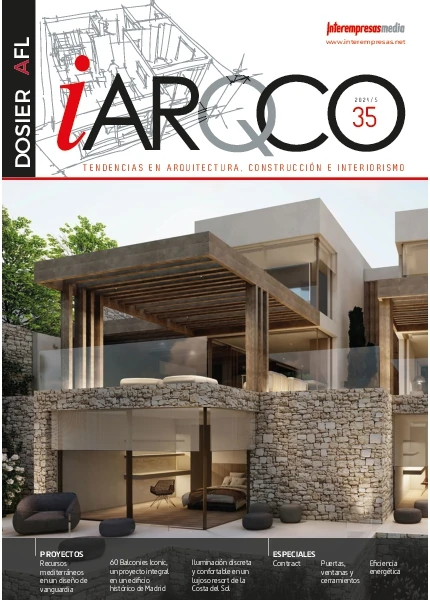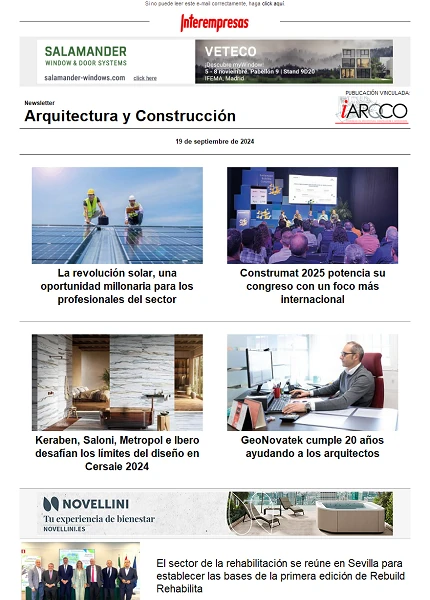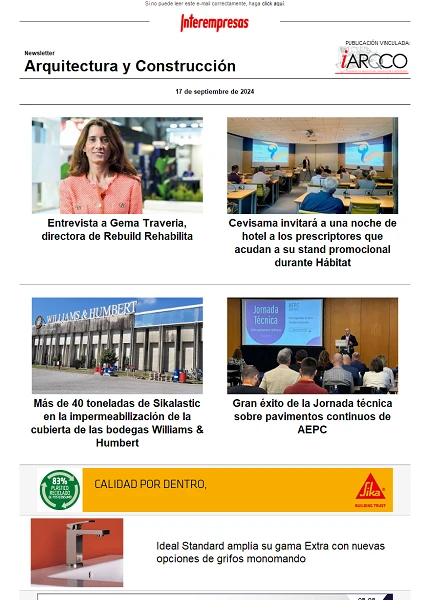Sustainability in the rehabilitation of residential buildings
The rehabilitation of thermal insulation using achieves economize of heating and cooling, energy emitting less polluting gases into the atmosphere, as well as improve the thermal comfort of the interior of the House and avoid pathologies such as condensation and humidity in the interior of the buildings. Then discusses a building in block of flats with constructive typologies which have not taken into account the sustainability of the building and what is what happens when we rehabilitate the building. With the thermal rehabilitation potential savings is of the order of 50% of current consumption.
Rehabilitate a building is the best chance to make it more efficient and sustainable, saving energy and reducing emissions of CO2. In Spain, 24 million homes are built without any criterion of efficiency or sustainability (92 per cent of the real estate Park). 40% Of the energy consumed in Spain is due to the buildings.
A building rehabilitated thermally can consume up to 90% less energy than the same non-insulated.
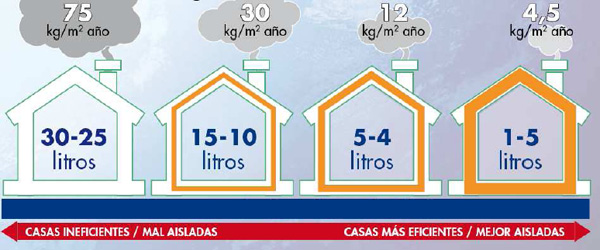
Badly isolated buildings lose the energy that we have provided different percentages throughout its envelope:
- Walls: 25%
- Renovation of air: 20%
- Roof: 30%
- Land: 7%
- Thermal bridges: 5%
- Windows: 13%
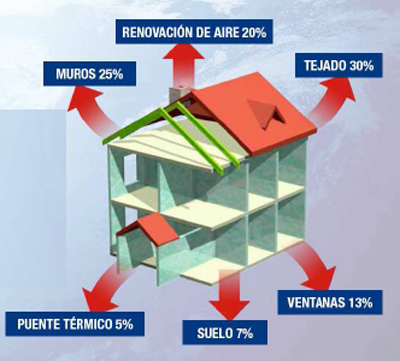
The three steps of the Trias energy we need to achieve sustainable buildings:
- Firstly, reducing the demand for energy by avoiding energy losses and implementing energy saving measures.
- Using sustainable energy sources instead of non-renewable fossil fuels
- Producing and using fossil energy in the most efficient way possible.
Within the actions for energy saving, isolation is the most effective solution that allows a minimum of investment return on the savings over the lifetime of the building.
It is also expected that energy undergoes an increase in price in the next few years. Isolating the building we managed to reduce the energy consumption of the same by which these price increases will have a minor impact.
Energy consumption in building
We live in a society with a high energy consumption. Half of the consumption in the housing is due to air conditioning (heating and cooling). To make existing buildings more sustainable, thermal insulation is the best option because it has a direct impact on the reduction of energy consumption in air conditioning which is the area where the building loses more energy.
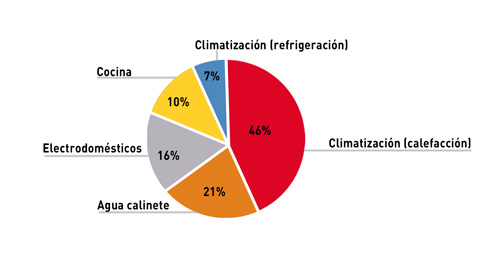
Is achieved with the addition of the thermal insulation in the rehabilitation of heating and cooling, energy-saving by reducing losses or heat gains through the envelope of the building; improving the thermal comfort of the interior of the House, avoiding the feeling of cold wall, and prevents condensation and humidity in the interior of the building.
Practical example of a rehabilitation
The energy savings that we can get through the following example can be checked easily: land building with a height of 4 plants located between medians with two façades with North and South. Each floor has two homes of 100 square meters each a (areas included), with 8 neighbors total. The dimensions of the building are:

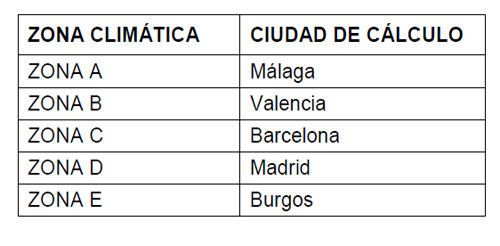
Constructive solutions of departure of the building are the following:
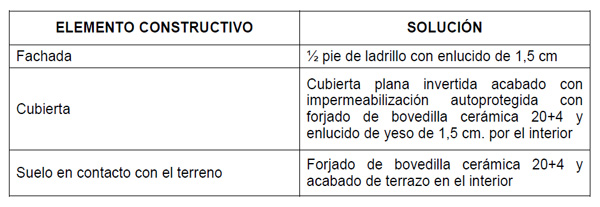
It was considered that the energy of heating is provided by cooling with electricity, with the current prices of energy and natural gas. The calculation of annual energy demand has been using the defined monthly method in the prEN 13790 'calculation of energy use for space heating and cooling'.
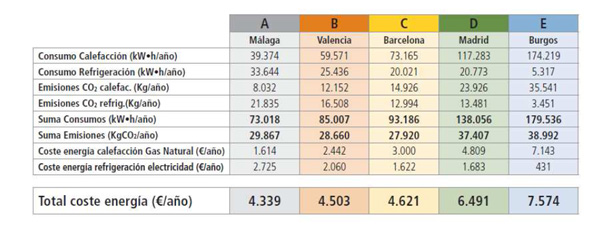
Rehabilitation that arises is a rehabilitation of energy, trying to make the building more sustainable as possible, to this end, the solutions provided in the example will not be only thermal solutions that will assist the building save energy but also solutions that provide acoustic insulation, passive protection against fires… The solutions adopted are as follows.
Facade
On the average foot of bricks with plaster 1.5 centimeters is a system of ventilated facade with high density of cement, air of 3 cm panel. And thermo-acoustic insulation of mineral wool of 8 centimeters thickness. In addition to to make an aesthetic change and increase the thermal and acoustic insulation, the rehabilitation of the facade is used to introduce facilities remaining on the outside of the facade of the interior of the ventilated facade.
Cost of rehabilitation:
- The rehabilitation cost: 78.520 EUR
- Cost of introducing the isolation in the rehabilitation: 8.398 EUR
- Total cost of rehabilitation: 86.918 EUR
Cover
The inside of the cover slab, a false ceiling with addition of 10 centimeters thick mineral wool is performed inside; This mineral wool, will provide an increase in the thermal insulation in the building block incorporated, but will also bring an increase in the acoustic insulation necessary in many areas to achieve the internal comfort in homes.
Cost of rehabilitation:
- Cost of rehabilitation: 7.296 EUR
- Cost of introducing the isolation in the rehabilitation: 2,224 EUR
- Total cost of rehabilitation: 9.520 EUR
Soil in contact with the ground
Isolation is carried out on the ground in contact with the ground with insulation 5 cm mineral wool which is placed a new flooring, changing the original terrazzo by a 2 tablets multilayer parquet.
Cost of rehabilitation:
- The rehabilitation cost: 11.896 EUR
- Cost of introducing the isolation in the rehabilitation: held EUR
- Total cost of rehabilitation: 14.890 EUR
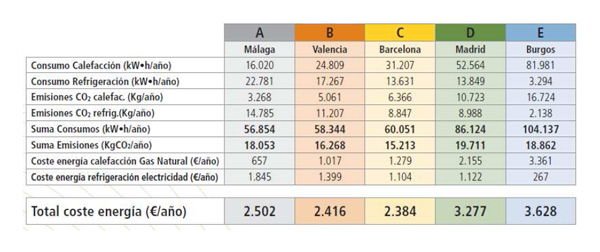

Amortization of the investment
Rehabilitation influencing energy consumption in the building currently has a series of grants to State and regional level that can help lower the total cost of rehabilitation.
In addition, incorporating thermal insulation to the building we recoup the investment in rehabilitation, to be the only way to achieve returns, as if in a rehabilitation thermal insulation is not incorporated, this will be ever amortized. The amortization of the extra costs involved put the thermal insulation in the rehabilitation shall be as follows:
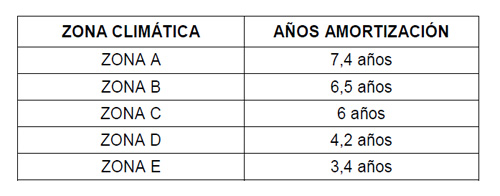
Once amortized the cost overrun of the isolation, the building will continue to be saving energy for the rest of its lifespan, which is seen in 50 years, therefore we will continue to render the investment which has resulted in the incorporation of the thermal insulation to the building envelope. Taking of energy costs very conservative values (considering that this will not go up, what sure isn't true because the cost of energy is growing), over the lifetime of the building once written off isolationyou would get the following savings:
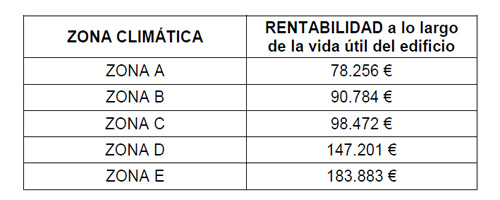
Conclusions
We can see that you incorporating thermal insulation to the envelope of the building, the emissions of CO2 of the building are reduced to almost half, so that we improve the environment making a more sustainable building.
With the rehabilitation they reach significant economic savings due to the saving of air conditioning which involves rehabilitation of the envelope. Using mineral wools in rehabilitation, we obtain in addition to an increase in thermal insulation and energy efficiency, the following advantages:
- Acoustic insulation. The addition of mineral wool to the façade and the cover managed to increase the sound insulation; This allows an improvement in the health of those living in the building producing noise excess illnesses such as stress, disturbances of heart rate, lack of concentration, asma…
- Passive fire protection. The use of non-combustible materials such as mineral wool guarantees proper passive fire protection with the reassurance that these materials do not contribute to the spread of any fire that can declare in the housing.
All these elements, rehabilitation of isolated with mineral wool is the best solution for:
- Achieve savings in emissions of CO2
- Cost savings on electricity bills or natural gas
- Thermal comfort in the interior of the House
- Acoustic comfort in the interior of the House


